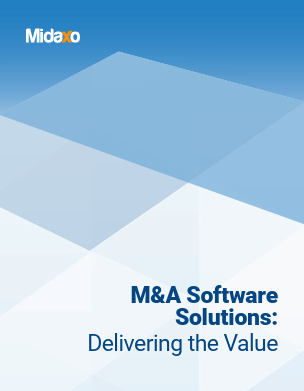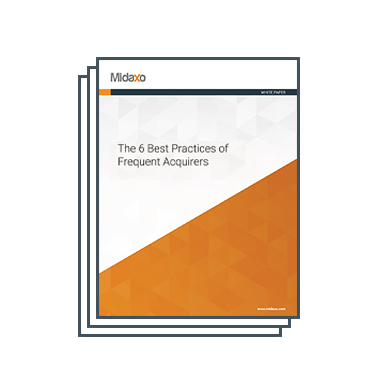First, the bad news. HBR cites research suggesting that 60% of significant mergers actually destroy shareholder value. Other published research notes deal failure rates of anywhere between 50% and 85%. One KPMG study found that 83% of deals were unsuccessful in delivering any discernible business benefit. A separate study by A.T. Kearney concluded that total returns on M&A were negative (source).
Despite discouraging performance rates, mindful companies with well-defined M&A strategies can and do use deal-making for strategic growth. Performance challenges shouldn’t keep leadership from pursuing M&A but rather, compel them to take proactive measures to maximize the chance of success.
In defending the reality of high-performance growth deals, Deloitte acknowledges:
“The acquirers associated with the high-performing deals grew faster than they would have before those acquisitions. These companies reported higher actual revenues three years after the deal closed than what was projected based on historical and projected compound annual growth rates (CAGR) and after accounting for revenue-impacting internal or industry events within the three years after the deal close.”
To a degree, alarming deal failure rates make sense in context. M&A transaction volume is increasing, as is the global nature and complexity of technology associated with deals. Deal-closing timelines and integration targets are ambitiously short – and increasingly happening across dispersed operations and business lines.
Successful companies aren’t simply finding better deals, but, as studies continue to show, are better at coordinating, planning and executing all relevant areas of integration.
Well-managed M&A provides an enduring competitive advantage. To maximize this advantage through solid integration practice, Midaxo recommends focusing on the 7 M&A integration strategies below as part of your framework to enhance target and deal-making return.

#1 Prepare in Advance
Maximizing deal value begins in the earliest stages. While smooth integration expands the value potential of M&A, if teams are executing on a deal that is simply incompatible, the value won’t be realized, regardless of how defined integration processes are. Many companies call this a ‘preliminary integration assessment’. At this stage, companies answer a well-defined and previously-agreed-upon set of basic rationale questions. These are posed before every opportunity that enters the M&A pipeline and assess the ultimate integration and value potential of a target.
This basic assessment may disqualify opportunities before they undergo further due diligence because synergies are just too illusive. This can be because of unmanageable cultural clash, merger or asset transfer laws or practical incompatibility of operations, for example.
#2 Define Success Factors
Every acquisition will present unique business, operational and cultural benefits, as well as challenges. This variety is expected and part of the inherent opportunity present in strategic M&A. But for all the differences, companies need to first establish a consistent set of success factors that guide integration efforts. These are compass (or anchor) points in the process that collectively define deal success. A core part of post-merger integration strategy dictates that decisions need to be made with these convictions in mind. Common success factors that span deal-making of any size/type include:
- Ensuring stability and operational continuity
- Maintaining customer focus
- Securing and increasing value
- Actively integrating cultures
- Emphasizing employee communication, well-being and retention
- Aligning strategy, processes and mission-critical systems, like IT and financial reporting

#3 Day One Readiness
Day One represents the first official day that the acquiring company becomes the new owner or when operations are aligned as a single entity. While this day is of tactical importance, it is also representative of something bigger. All eyes are on leaders as stakeholders build a perception of leadership competence, gauge impact to their livelihoods and establish their level of buy-in to this new world. Navigating Day One must include addressing three core areas: communications, operative structure and systems and controls.
Communications
Thoughtful, planned communication not only shares important information to internal and external stakeholders, but builds trust and helps maintains motivation in a time of relative uncertainty. Practically, it can reduce the impact of rumors and help to unify different parts of the new, joint company.
Operative Structure
Defining the operational structure and reporting procedure is a Day One requirement. If this information is not available, or is poorly communicated, personnel will follow familiar habits. While initiating change is always difficult, there is a natural openness on Day One and beyond that, establishing new protocol gets difficult. HR should play an important role in these shifts and needs to be apprised in advance, while having a strategic say in structural planning, future staffing, strategy, etc.
Systems & Controls
Continuation of financial and sales reporting is crucial for management to be able to control the operations of the target and the progress of integration. It is recommended to have clear and detailed instructions with ready-made forms and templates available to the both the acquired and acquiring entity teams on Day One.
#4 Define Objectives
Building on the idea of standard success factors, deal objectives need to be clearly established and communicated. These have a more deal-specific flavor, but guide decision making throughout the post-merger integration steps. These objectives will be drawn by company leadership from considerations around: underlying logic of the deal, structural nature of the deal, system integration planning, schedule optimization, investor return expectations and other commercial or strategic rationale that underpinned into “green-lighting” the deal.
#5 Prioritize Activities –Day One to 100
Deal teams will be hit with a deluge of tasks the moment a deal is signed. General tendency is to divide up activities and get to work. Instead, teams need to work from a prioritized list of activities and establish coordinated action plans to make sure they are working the right tasks in the right sequence.
Instead of trying to brainstorm likely tasks across all relevant business areas, consider beginning with Midaxo’s merger integration checklist. This resource captures key PMI activities across all areas of integration concern and can support immediate sequencing and prioritization. Whether deal teams use this tool or build their own internally, it is critical to think about these tasks in order – from planning to Day One and then on to the First 100 Days.
In particular, the First 100 Days represents the high-visibility window in which the critical path toward value realization and change management is set. An integration strategy must include staged deliverables in separate phases to reduce implementation risks and set the stage for a healthy future for systems, operations, culture and controls. As well, it is where companies will practically assess their pre-purchase phase findings and build relationships with acquired entity leadership, employees and key customers.

#6 Link Due Diligence to PMI
Information transfer or issue tracking from the acquisition team to the integration team is often incomplete. Additionally, because of how transaction and integration responsibilities get divided, the integration team may not understand the full scope of deal strategy or objectives behind aspects of the acquisition.
Obvious outcomes of this are either (i) wasted resources as unimportant issues are prioritized and resolved, or (ii) deal-critical issues are neglected, compromising important aspects of the integration such as reporting system service or customer service consolidation. A robust M&A software platform such as Midaxo offers integration teams the opportunity to seamlessly look back through the due diligence and planning phases to understand what is essential and stay in lockstep with intended outcomes.
#7 Report & Collaborate in Real Time
As with any project, effective post-merger integration management includes regular reporting, reviews against set goals, feedback and summaries of the results. This spans all communicative activity from the integration kick-off meeting, to setting agendas for intermediate review meetings. Ongoing report examples for post-merger integration will include:
- Team/stream reports
- Integration manager reports
- Market/country reports
- Integration steering group reports
- Board reports
- Owner reports
- Learnings/Post-mortem reports
Similarly, throughout the integration process the acquisition team will need to drive collaboration and sharing with integration heads (i.e. – in HR or Procurement, for example) issues that are relevant to their specific stream of integration. This can, and should, be done in a collaborative platform environment to ensure that leaders have the latest version of project sheet and can address tasks, corrective actions, notes or sub-tasks in one central place. This must move out of email and off static spreadsheets to create a synchronous, interactive and accurate process.
Takeaway
Making deal expectations a reality is achieved when process-focused attention is invested in the integration fundamentals. The areas of post-merger integration are interconnected – making the effort to improve one is likely to have a lasting and positive impact on others. While specifics may be tailored to the acquirer’s current business and reality, consider growing integration competencies by focusing on these seven core practice areas.





